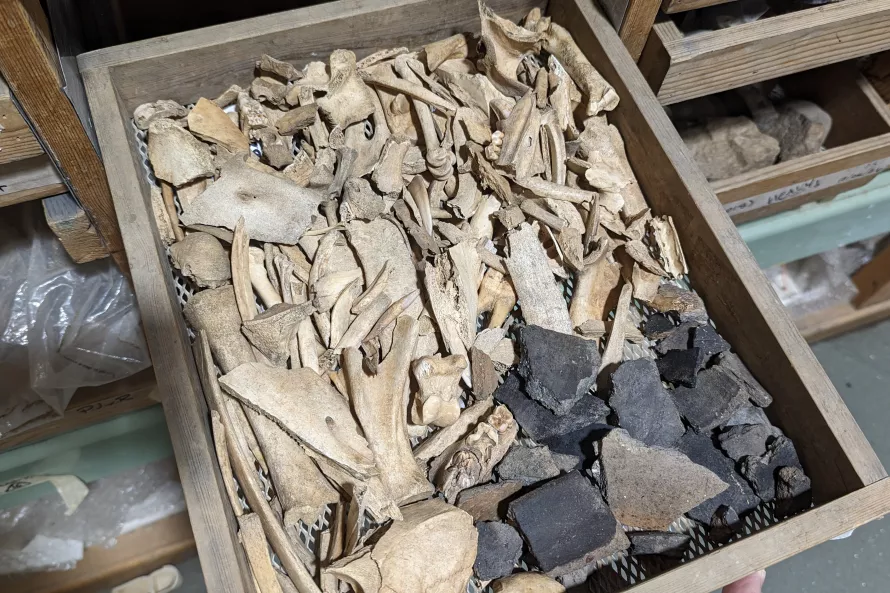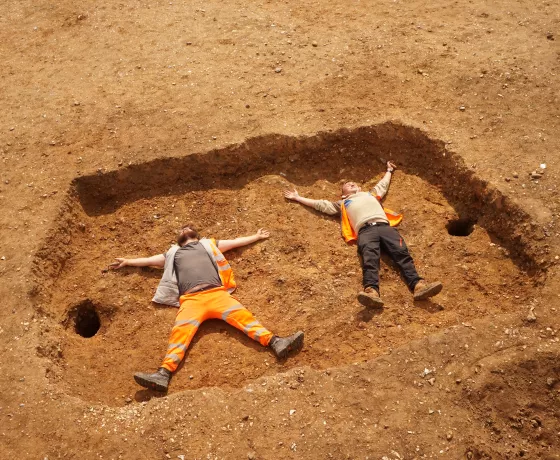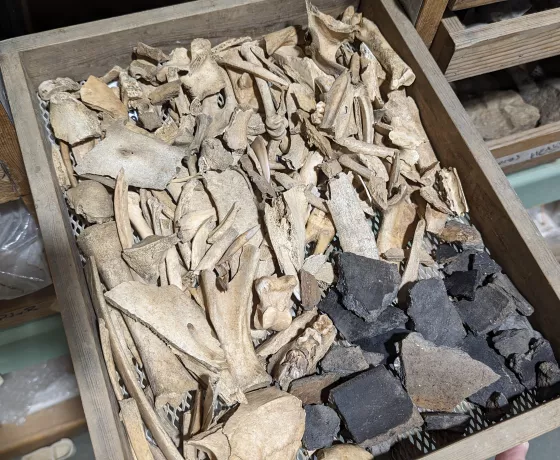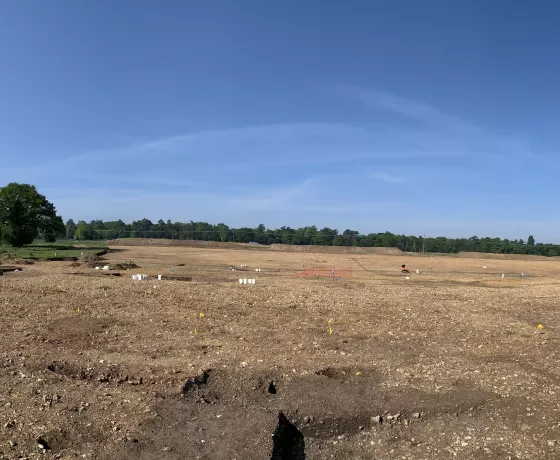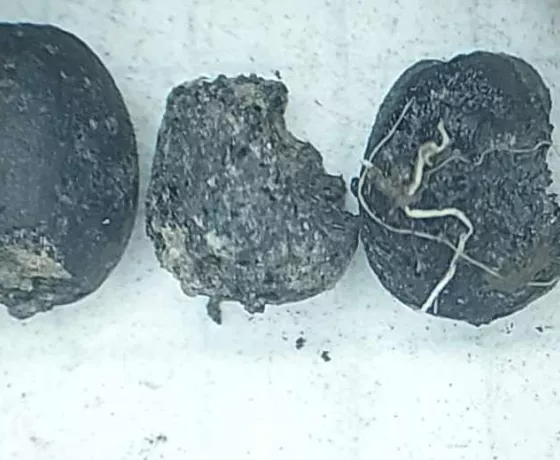Our time on site is starting to draw to a close. So, as we begin to think about the post-excavation phase of work still to come, it seems like a good time to have a bit of a look at some of the finds and what they’re telling us about the site.
Above: prehistoric stone tool (possibly a repurposed Langdale axe) showing possible evidence of someone trying to create a hole through the middle.
Almost all the prehistoric activity on site has been concentrated on the higher ground in Areas 1 and 2. An early find was this stone tool (above), but understanding its story was more complicated than expected. At first glance it looks like a Langdale axe, a distinctive tool dating to the Neolithic period (c. 3,800 - 3,400BC). However, the matching cup marks (circular depressions) on either side aren’t typical for axes of this type. Are we looking at a Neolithic axe which has been reused at a later date for something else, or did the original maker intend to create a hole all the way through and then changed their mind? Perhaps it is not an axehead at all… could it instead be a Bronze Age cushion stone (anvil)? It was after all found in a small pit with lots of sherds of Collared Urn, which dates to the Early Bronze Age (c.1,900-1,600BC). Further analysis by our specialists will hopefully provide answers.
Above: fragment of Early Bronze Age collared urn.
One find type which we’ve been getting rather a lot of is worked flint – the last running total was over 2,700 pieces. Worked (or struck) flint seemingly gets everywhere! We have been finding it in the prehistoric features, which makes sense as they date to the same period, but we’ve been finding it in the Anglo-Saxon features too. We can learn a lot from struck flint, the beautiful Early Neolithic arrowhead (pictured below) tells us that early farmers were still hunting animals. The team have also been finding quite a lot of unworked, burnt flint down by the palaeochannel (old river channel) in Area 3. We think this burnt flint is the remnants of burnt flint mounds which have eroded into the palaeochannel over time. There’s no coherence to where the burnt flint is, so it’s certainly not in situ anymore.

Above: Early Neolithic arrowhead.
We have also been finding fired clay, mostly in amorphous lumps, which were once part of something larger, but have broken up into pieces after going out of use. Unfortunately, it’s hard to say anything specific about these sorts of lumps. Thankfully, we do have a few nice pieces, like this rather fine triangular weight (below). This weight looks to be missing the top part, but it’s still recognisable as a weight, so we can conclude that inhabitants were producing textiles in the area during the prehistoric period.
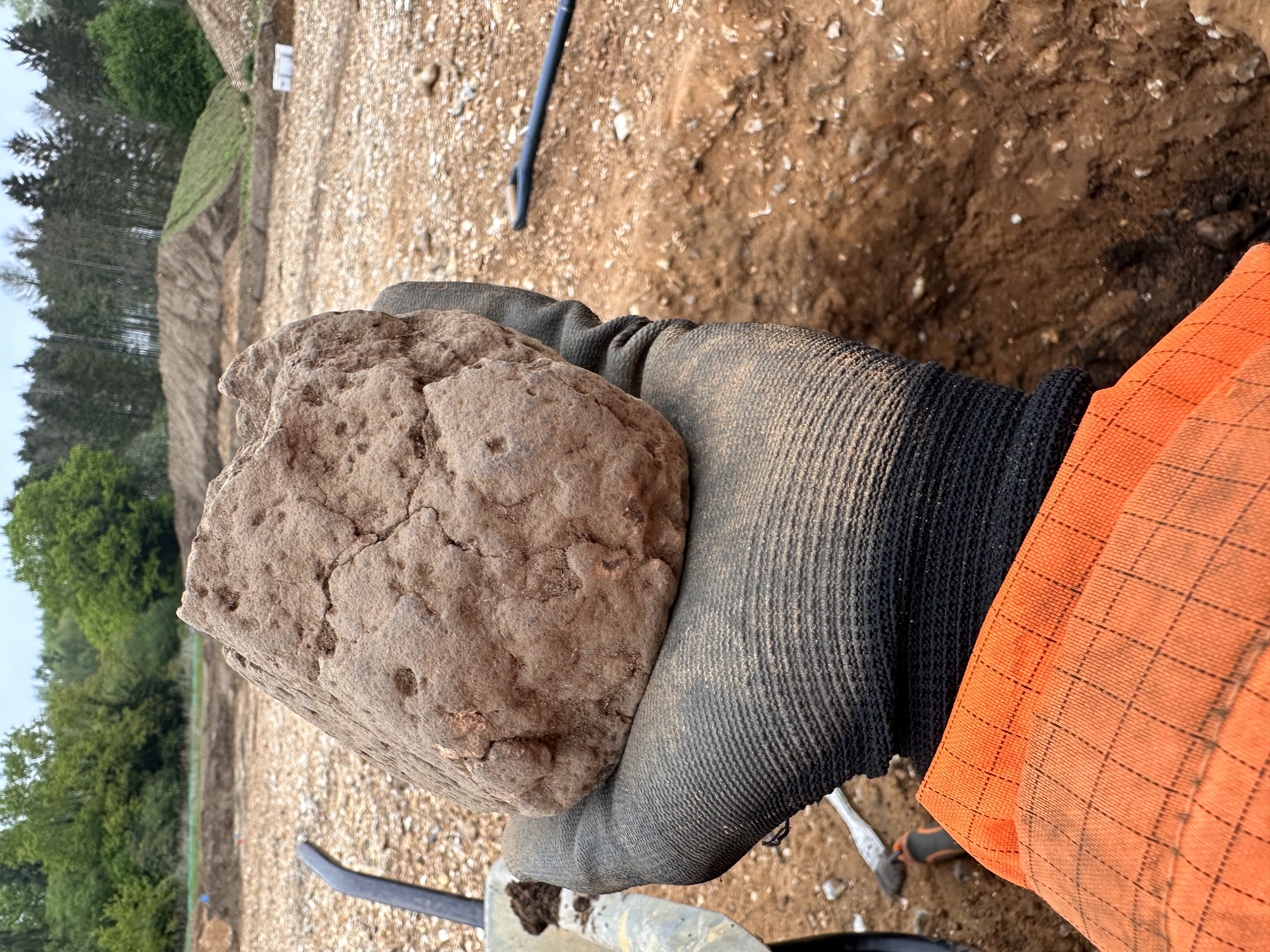
Above: a triangular weight made of fired clay.
Whilst the majority of the archaeology across site dates from the Neolithic, Bronze Age and Anglo-Saxon periods, we do have a smattering of Roman remains. We’ve recovered several assemblages of Roman pottery from a network of enclosure ditches across Area 3. The pottery isn’t very abraded (worn), which would suggest that it was thrown into these ditches pretty soon after it broke. This tells us that it probably hasn’t travelled very far. Whilst we don’t have any evidence for Roman settlement directly within the site, this pottery tells us that they’re definitely living somewhere nearby.
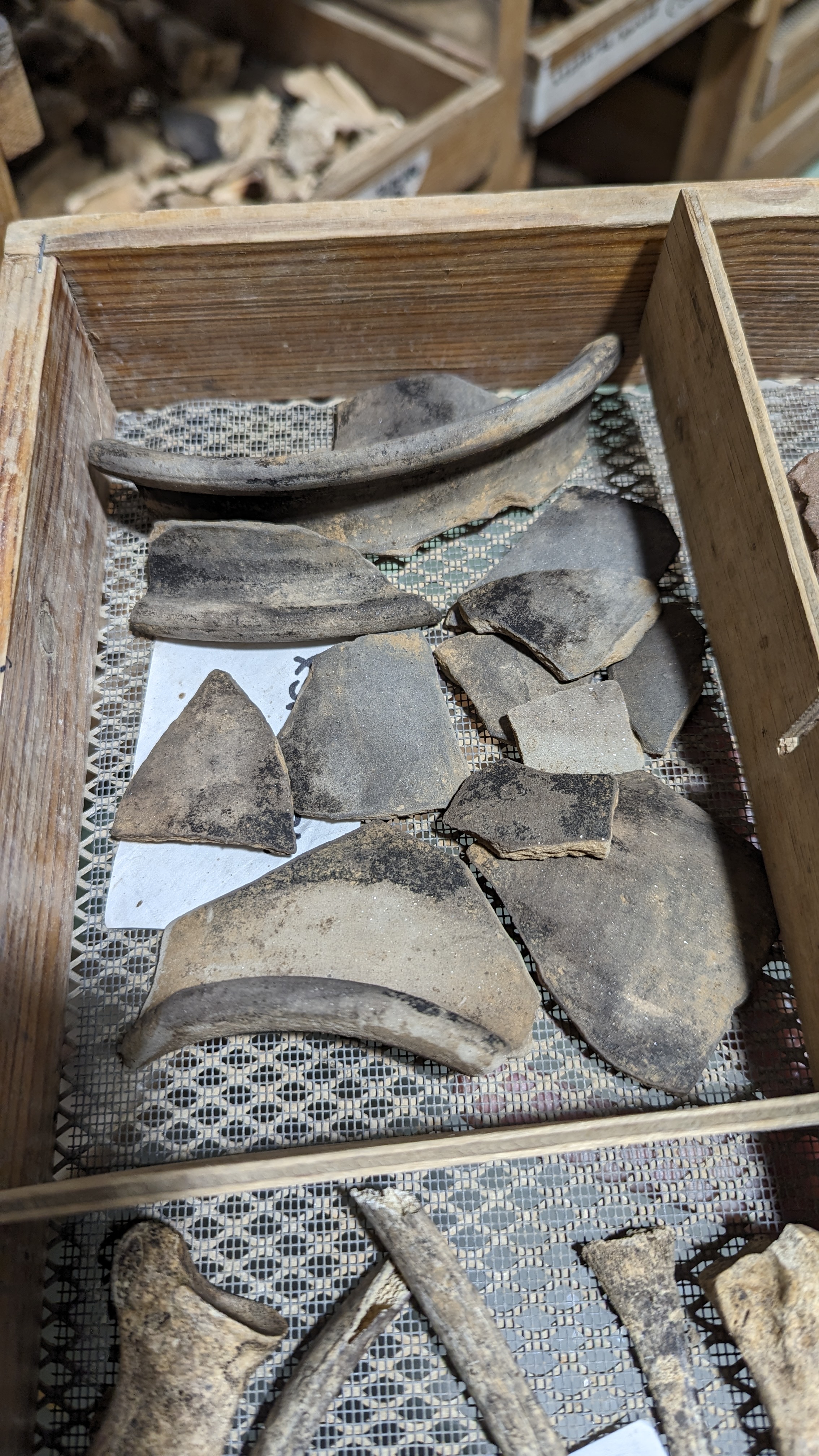
Above: sherds of Roman pottery.
People we know were definitely living and working on the site were the Anglo-Saxons. The last count we had of pottery from this period came out at 1,300 sherds, weighing some 19kg. So quite a lot! The vast majority of the pottery we’ve recovered thus far is from the Early Saxon period and it’s very lovely to look at. We’ve got lots of pieces with different stamps and decoration on them, which makes them very datable. For example, the piece below is from a large globular vessel which has been decorated with stamps and incised lines and dates from c.475-525AD. Not all the Saxon pottery is decorated, in fact the vast majority of what we’ve collected is plain, but that’s quite normal for this period.
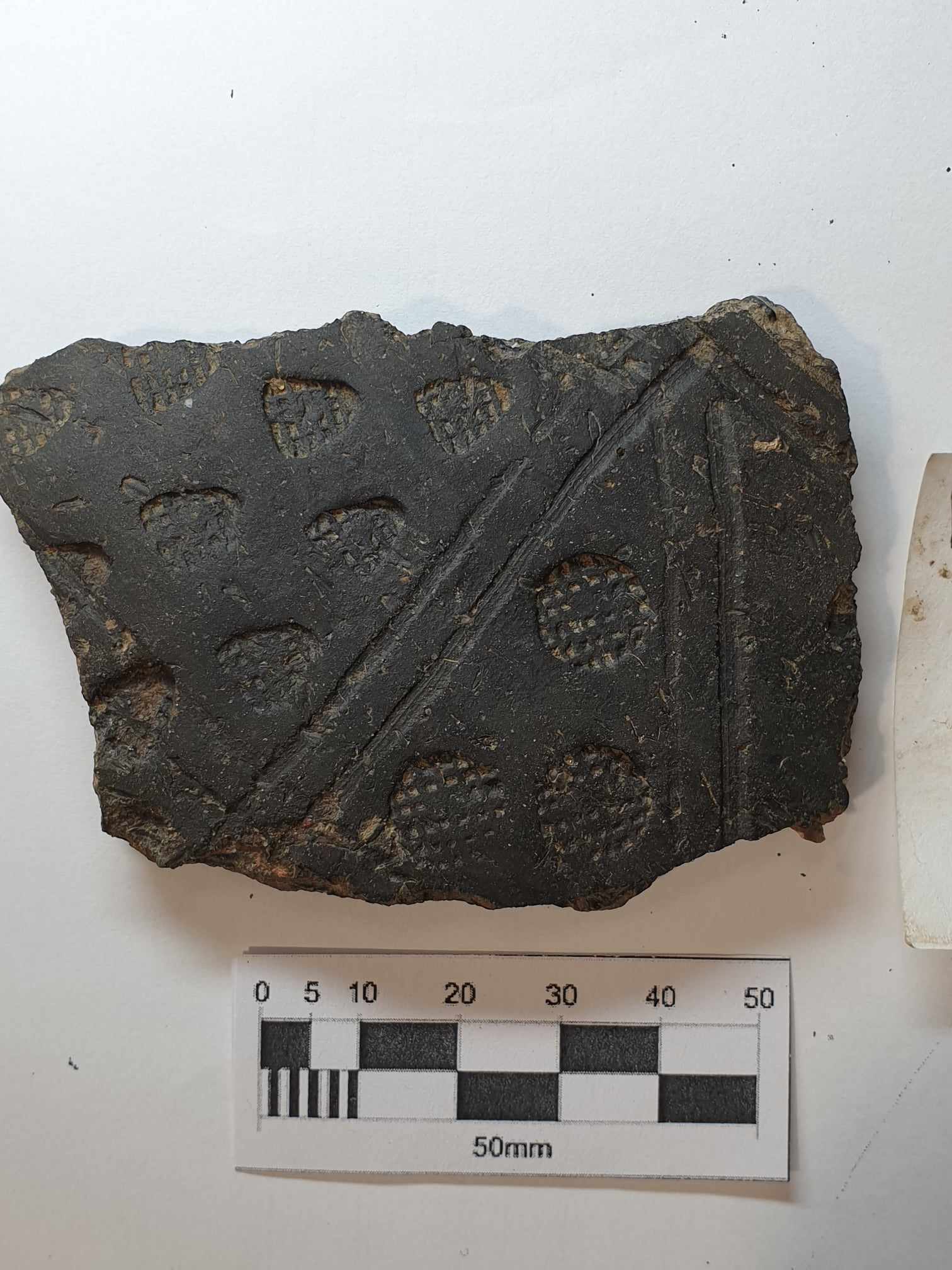
Above: a sherd of Saxon pottery from a globular vessel.
As well as Saxon pottery, we’ve also recovered quite a collection of worked bone from the features we’re investigating. These lovely little pieces tell us lots of things about the people who were living here and what they were getting up to on a day-to-day basis. For example, we’ve got bone pins, needles and weaving beaters, which tell us that people were sewing, weaving and making textiles.
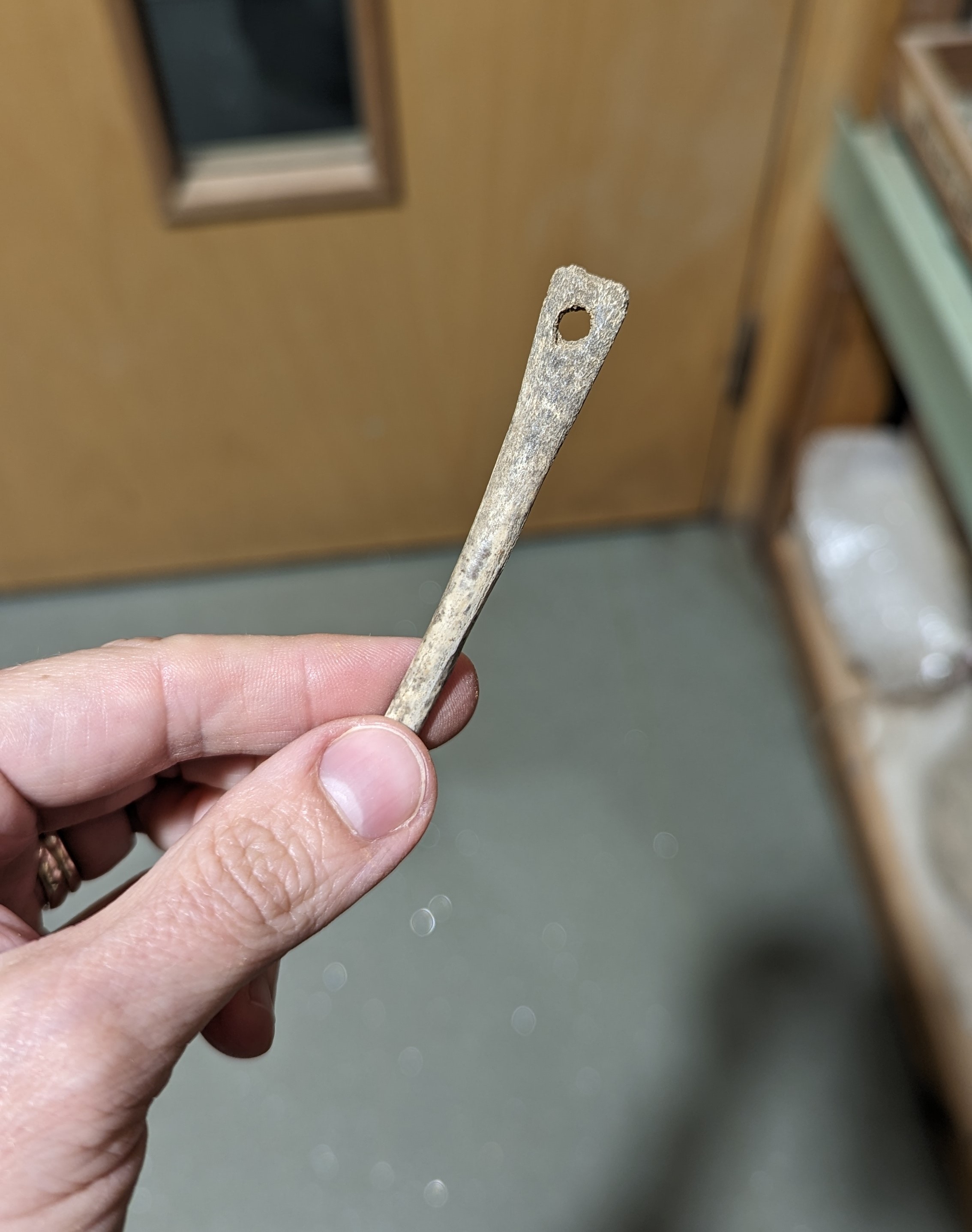
Above: a worked bone needle.
Another type of worked bone item which we’ve found quite a lot of examples of are bone combs. Bone combs are synonymous with the Anglo-Saxons and whenever a member of the team finds one, everyone get very excited! They’re beautiful things and always very intricate with different types of decoration. This decoration helps us to date the combs and we can sometimes pinpoint them to quite a specific period of time. Bone combs come in a few different styles and all of ours thus far are double-sided combs, i.e. they have teeth on both sides on the handle. Bone combs are very labour intensive to make and the fact that they were often highly decorated would indicate that they were viewed as important items. With all these combs on site, you’d be forgiven for thinking that the Anglo-Saxon community here must have been very well-kept people with lovely, combed hair! But at a time when regular access to clean water for washing wasn’t necessarily at the top of the list of important things, these combs would also have come in useful for keeping on top of any fleas and head lice.
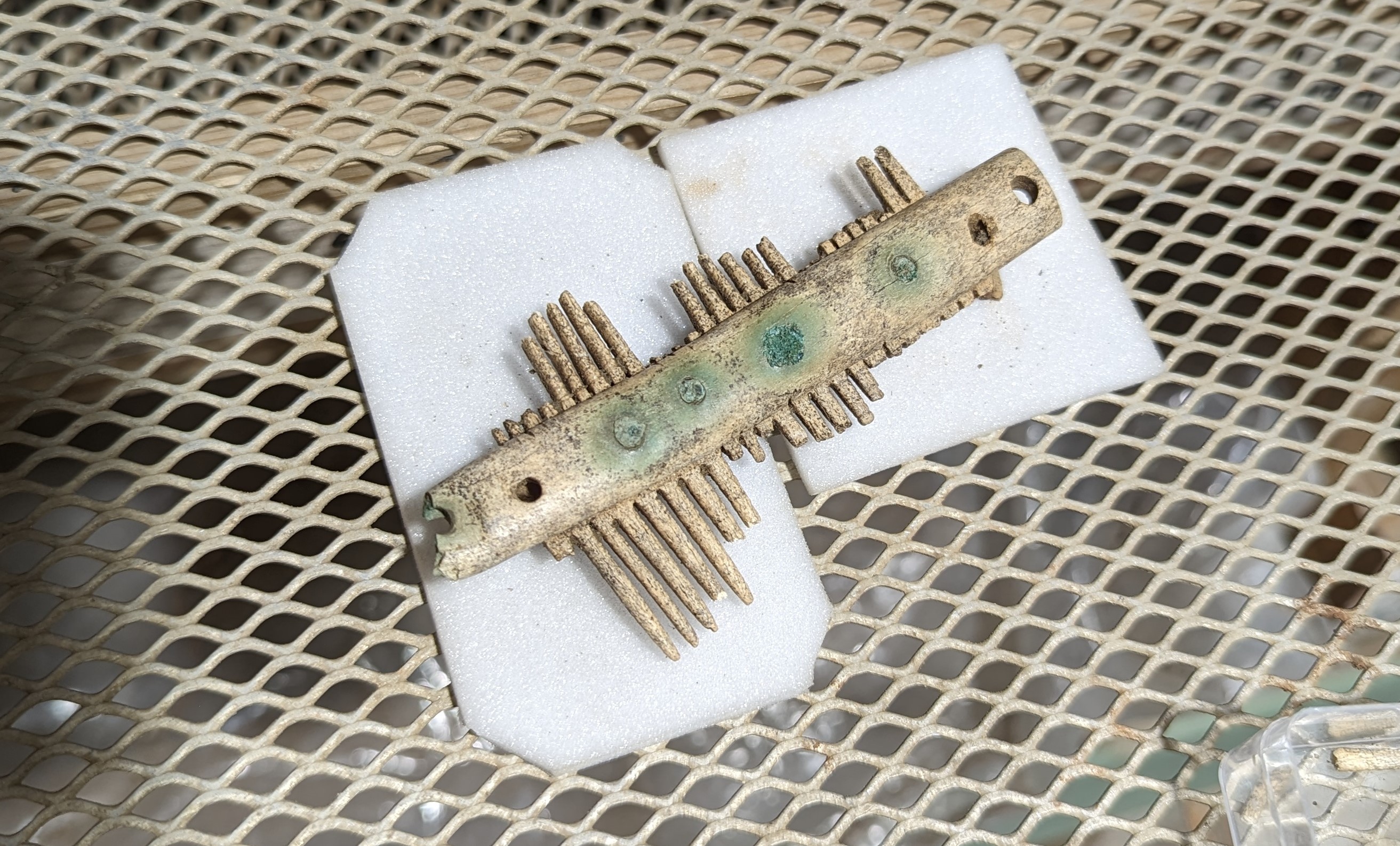
Above: a worked bone comb.
The Anglo-Saxon people here were clearly very good at making things because on top of all of the worked bone, we’re also finding lots of metalwork on site. We’ve got knives, sheers, rings, nails, brooches, coins, loops, tweezers, buckles…
All of these items help us to build up a picture of what the local community were doing, what trade links they had, what industries they were involved in, how they dressed, and so on. For example, the below knife (which if you look at the scale bar next to it, is super small) is an Evison type A blade dating from the 6th century and it’s thought that these small blades were used during textile production.
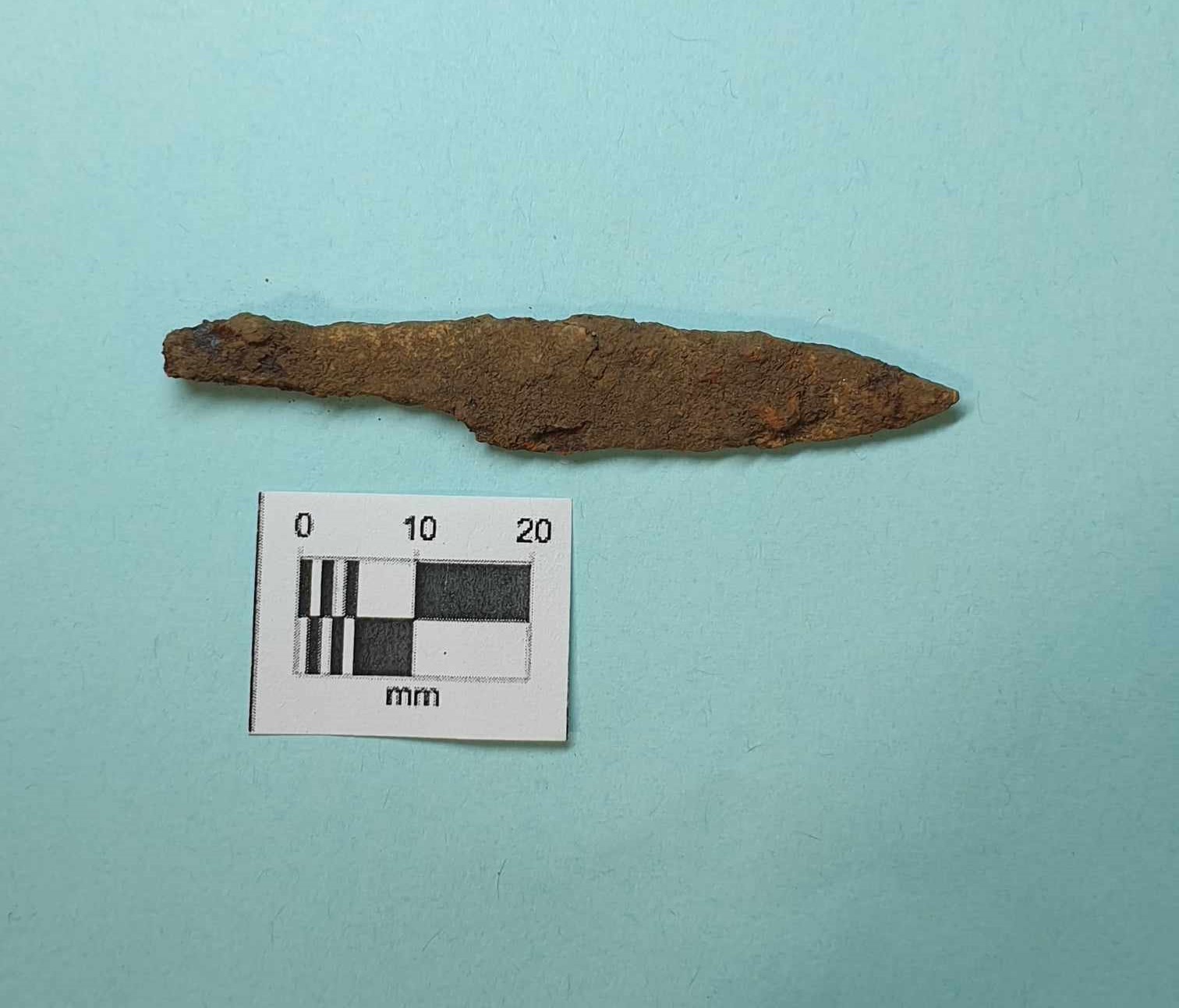
Above: a small knife, Evison type A dating from the 6th century.
As well as their well coiffured hair, the local Saxon population probably had some very stylish clothes, as indicated by this absolutely stunning brooch. This is a small, long trefoil-headed brooch. Sam found this placed nicely at the bottom of a posthole within a sunken-feature building, which is interesting as it suggests that it was put there on purpose rather than an accidental loss.
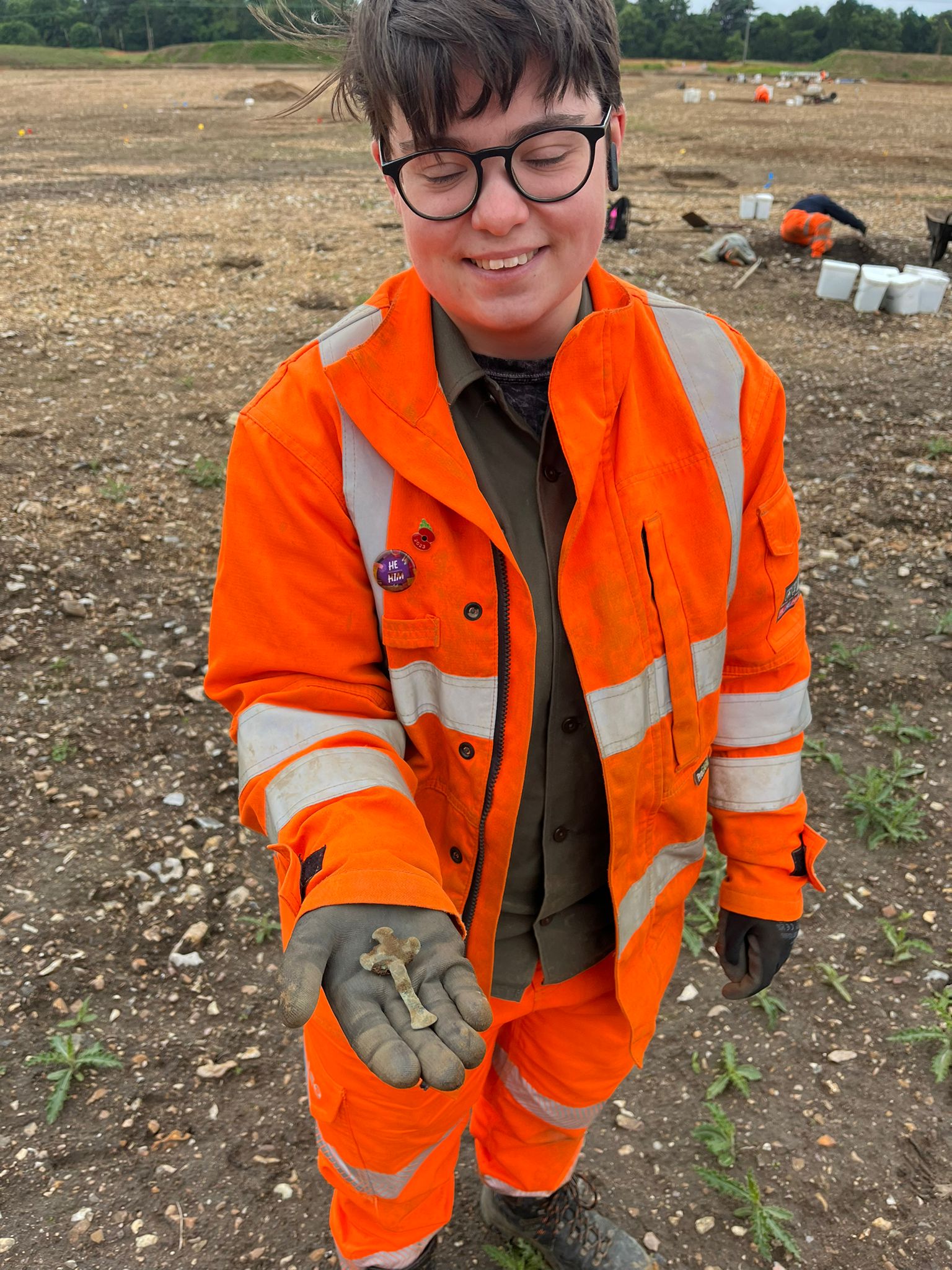
Above: Sam holding the long trefoil-headed brooch.
Other posts in this collection
Read our latest posts about the investigations at Abbot's Vale.

